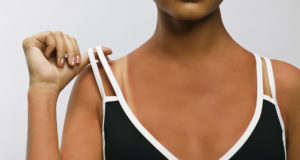
To help take the mystery out of the ingredients listed in soap, lotion, serum or other products you have received from Momma Muse (or other handmade bath & body companies), here is a list of the commonly used ingredients by common name, label name (the FDA required INCI name – International Nomenclature for Cosmetic Ingredients) and description of skin benefits and properties it provides. Don’t let those mysterious names on the labels scare you off – so much of it is just a complicated name given to a simple ingredient.
Distilled Water
– We always used distilled for safety and purity.
Hydrosols
INCI depends on the hydrosol used.
– Hydrosols are also known as floral waters, essential waters, or distillates. They are purified waters which occur during the process of extracting essential oils from plants and flowers. The hydrosols we use are all natural, containing no added fragrance.
Infusions and Teas
In some recipes, infused oils with herbs, or create a tea, using distilled water and herbs are used to maximize the benefits of specific plants. Not to mention, it’s lovely label appeal.
Almond Oil
Prunus Amygdalus Dulcis (Sweet Almond) Oil
– An excellent skin softener and moisturizer. Almond oil is great for all skin types but especially beneficial for dry or irritated skin.
Apricot Kernel Oil
Prunus Armeniaca (Apricot) Kernel Oil
– High in both vitamins A and E. It helps moisturize and soften skin. Helps skin retain it’s elasticity, clarity, and suppleness.
Rice Bran Oil
Oryza Sativa (Rice) Bran Oil
– A nourishing oil and a powerful skin protectant, high in gamma-oryzanol as well as anti-oxidants, which will protect and replenish the skin. RBO is rich in phytosterols, helping to help reduce inflammation and soothe discomfort. It also contains the highest quantity of vitamin E in liquic form. Beneficial to mature, sensitive and delicate skin.
Olive Squalane
Squalane (Olea Europea)
– Squalane is a very light, fine oil which is absorbed deeply and quickly into the skin, leaving no oily residue. Squalane is a wonderful oil for skin issues such as eczema, dermatitis, rashes, psoriasis, cracks, so far as helping with bruising or healing of the skin. Because squalane is naturally present in the skin (a botanical lipid) having an identical molecule structure to human lipids, it is effectively used in facial products to help reduce wrinkles and rejuvenate the skin.
Jojoba Oil
Simmondsia Chinensis (Jojoba) Seed Oil
– Jojoba oil contains protein and minerals. It is similar to our own sebum which is secreted by our glands, helping lubricate, as well as, protect our skin.
Fractionated Coconut Oil
Caprylic/Capric Triglyceride
– This light oil helps carry therapeutic oils under the skin. Containing medium-chain triglycerides, it also helps moisturize and soothe the skin.
Vitamin E
Tocopherol
– A natural skin antioxidant, promoting healthy tissue – healing and rejuvenation.
Monoi de Tahiti
Cocos Nucifera (Coconut) Oil (and) Gardenia Tahitensis
– A moisturizing and naturally fragrant oil, which quickly penetrates the skin acting as a natural barrier helping prevent dehydration (and wrinkles) of the skin. A wonderfully, naturally scented oil excellent for all skin types.
Palm Oil
Sodium Palmate
– Used as a base ingredient in many luxury and expensive soaps. It is considered a vegetable tallow which produces a hard bar of soap which is both mild and cleansing.
Palm Kernel Oil
Hydrogenated Palm Kernel Oil
Sodium Palm Kernelate
– Very similar in qualities as palm oil, it produces a cleansing, hard bar of soap which lathers well.
Coconut Oil
Cocos Nucifera (Coconut) Oil
Sodium Cocoate
– Coconut oil makes a hard bar of soap which lathers beautifully.
Olive Oil
Olea Europaea (Olive) Oil
Sodium Olivate
– A moisturizing oil used in soaps – castile soaps are generally 100% olive oil, but there is no requirement as to what percentage must be used. It softens skin while attracting moisture to your skin. Makes for a mild soap which keeps your skin soft, supple and younger looking.
Shea Butter
Butyrospermum Parkii (Shea Butter) Fruit
– Shea Butter is deep penetrating and long acting. Is needed to restore the skin’s moisture balance and prevent visible signs of aging and wrinkles.
Cocoa Butter
Theobroma Cacao (Cocoa) Seed Butter
Sodium Cocoa Butterate
– Cocoa Butter is absorbed quickly into the skin to soften, lubricated, moisten and nutrients the skin. Works great to prevent and treat scars, stretch marks, and damage skin.
Glycerin
Glycerin
– Glycerin is a humectant, meaning it draws moisture to the skin. This is the whole idea of lotion right? To moisturize our skin, keeping it soft. Good stuff.
Emulsifier
Glyceryl Stearate (and) Cetearyl Alcohol (and) Sodium Stearoyl Lactylate
– Because lotion is made with mixture of both oil and water, an emulsifier is necessary to blend and hold the two together. We have chosen a natural self-emulsifier which helps to provide a natural moisturizing factor found in the skin. Our emulsifier provides a conditioning and softness to the skin.
Stearic Acid
Stearic Acid
– We use stearic acid 100% palm derived (i.e. vegetarian friendly). Stearic acid is used to help bind the oils and water together, but also to help thicken, as well as stabilize, lotion.
Cyclomethicone
Cyclomethicone
– Used to prevent a greasy feel and impart a soft & silky feel to lotion. Commonly used in lotions to provide a “powdery” feel. Also used in body sprays and bath items (bath salts, etc).
Preservative
Propylene Glycol, Diazolidinyl Urea, Iodopropynl Butylcarbamate
– The preservative we use in our lotions is a broad spectrum, non-paraben bactericide and fungicide. It is highly effective against both Gram-negative and Gram-positive bacteria, yeasts, molds and troublesome house organisms. We do not have our lotions tested, other than to give to family and friends, however we always use the recommended percentage of preservative to provide maximum safety for our users.
Lye
Sodium Hydroxide
– This is the chemical used to make soap. Without this chemical, there is no soap, period. Sodium hydroxides causes a chemical reaction called saponification. Once saponification is complete, the finished product is soap – and there is no lye in the finished product. You will see sodium hydroxide on our ingredient list, however another way to list it is as a saponified oil – for example, for an olive oil soap we could just list it as “sodium olivate” – which means the same as sodium hydroxide, olive oil.
Fragrance Oil
Fragrance
– Fragrance oils are added in small enough quantities to not be an irritant for most people. Yet, we add enough to give a light scent which, in your favorite fragrance, you’ll have a hard time resisting the urge to sniff your hands (again and again!). May not be included in all our lotions, as we are able to make available unscented, scented naturally with hydrosols or with essential oils – usually by special request.
Colorants
– We use a combination of micas, oxides, spices, and clays to achieve colors in our products.

Source by Judi Cox
 Vitamin Agent The Health & Naturalistic Source
Vitamin Agent The Health & Naturalistic Source




